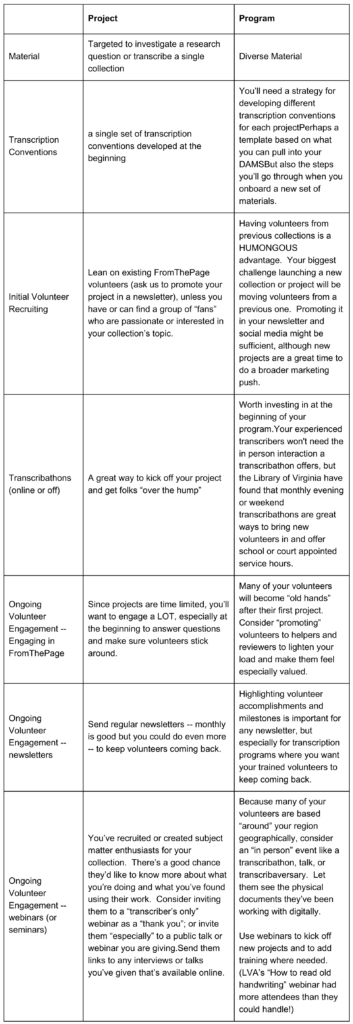Are you running -- or do you want to run -- a crowdsourcing project or a crowdsourcing program? They are different!
We’ve noticed over the years that folks have different attitudes and approaches to crowdsourcing projects. Some do a single project and are done – at least until the next research question or grant funding comes along. Others invest in a crowdsourcing program that becomes part of their institution's way of working.
Here’s some questions to consider to help determine which approach is right for you:
- How much material do you have?
- Is it grant funded?
- What’s the purpose? For example, “We’re going to transcribe our holdings of German orchidologist field books.” suggests a project and “We want to make our holdings more accessible and findable.” suggestions a program.
Projects:
- Usually material oriented
- Targeted set of materials
- Limited funding
- Limited time
- Experiment or “Small Bet”
- Material specific goal
- May be run by an academic rather than an archivist or librarian
- Output may flow back into DAMs, but likely a different primary use
Programs:
- A deep set of material
- A commitment to ongoing outreach and engagement
- Usually an organization/institution
- Becomes part of your digitization workflow
- Primary use of transcriptions is enriched metadata and engagement
A project and a program may last for the same amount of time -- if you’re a small organization you may get through all of your transcribable material in 3 years and if you’re grant funded you may have 3 years to transcribe your documents, but your approach and challenges may be different.
When it comes to the nitty gritty of implementing crowdsourcing, here’s a table of how the two approaches are different:
You don’t have to decide up front – a lot of folks run a small project before committing to a longer-term program. Which one would be best for you? We’re always happy to brainstorm approaches!

